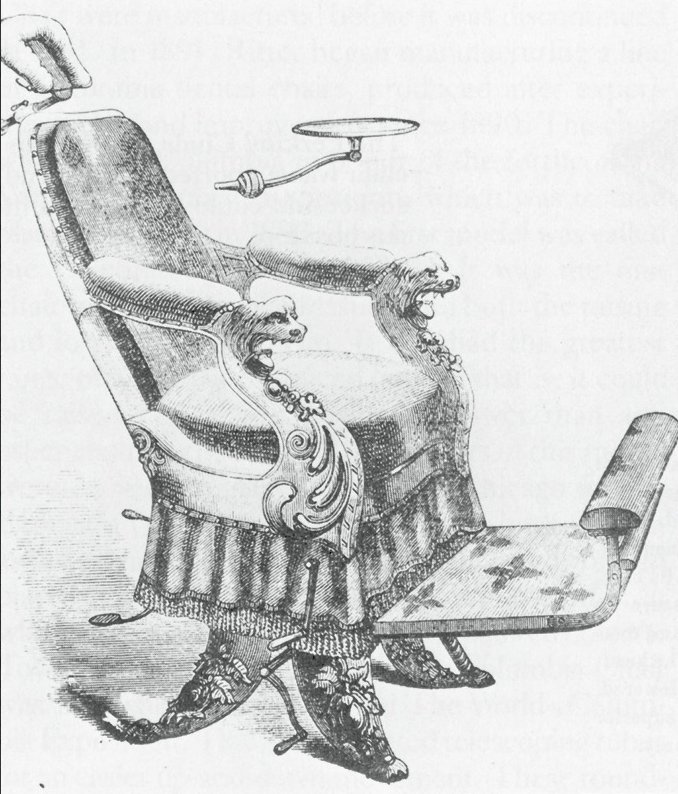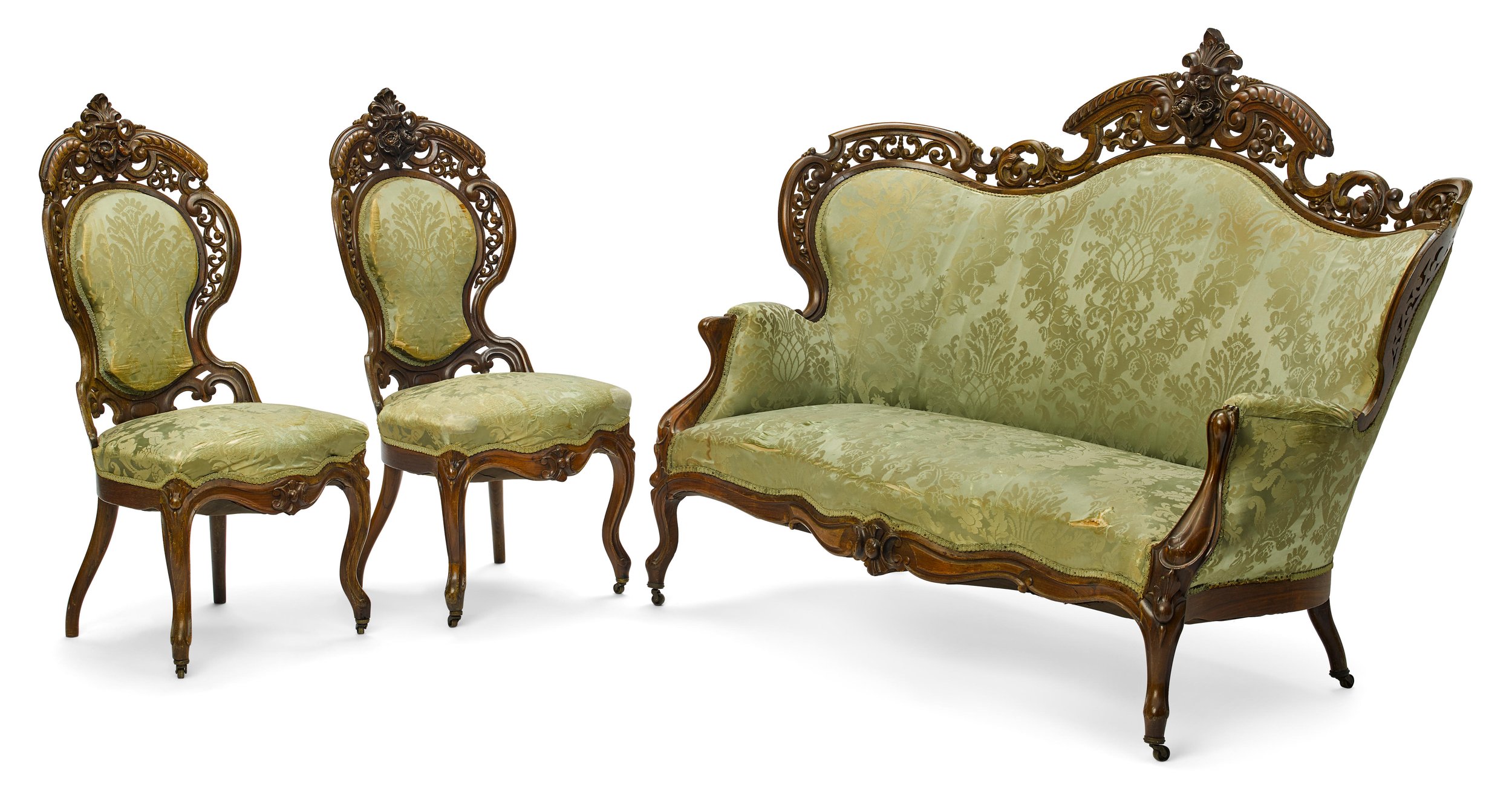
Vulcanizer
Circa 1880s | Object # 0339.0091
Charles Goodyear was granted a patent for the manufacture of vulcanite (vulcanized or hard rubber) dentures in 1855. Vulcanite was a cheap material, compared to ivory or gold and it could be easily molded to the shape of the mouth with accurate surface detail.
Porcelain teeth, rather than being held in place by pins and soldered to a denture’s cast metal base, were inserted into the upper or lower denture while it was cradled within the lower half of a metal dental flask. The flask and its contents were steam-heated under pressure in a vulcanizer oven.
Initially, the rubber became soft enough to fill the mold crevices and surround the porcelain teeth. With additional heating, the rubber continued to cure, becoming vulcanized. Ideally, the process made a denture with teeth securely fixed in a fully hardened but flexible plate and gums.
Vulcanite as a denture material had its disadvantages for the patient. Being porous, when improperly cured it succumbed to the moist environment of the mouth, becoming discolored and foul-smelling over time. Despite the dangers of its curing and the shortcomings of its use, vulcanite remained the denture material of choice from the mid-1800s to the 1930s.

1/4:

2/4:

3/4:

4/4: 1860: The Whitcomb Dental Operating Chair was the first to permit raising and lowering of the seated patient. Courtesy of Pictorial Histories Publishing Co, Missoula, MT - Glenner, 1984
Pre 1890 chairs

1/5: 1832: Englishman James Snell made the first mechanical dental chair with an adjustable seat and back. Leaning back in this circa- 1830s mobile reclining chair (A3.1) automatically raises the footrest. University of the Pacific Permanent Collection, Donor: Unknown. Photograph by Jon Draper.

2/5: 1868: A unique mechanism in the James Beall Morrison Dental Chair allowed the dentist to tilt the patient in any direction. Courtesy of Abrams/Mosby Publ, New York, NY — Ring, 1985

3/5: 1872: Four years later, J.B. Morrison invented the first chair with an unprecedented vertical range of 27 inches. Such height adjustment flexibility allowed the dentist to choose between working while sitting or while standing. Courtesy of Pictorial Histories Publishing Co, Missoula, MT - Glenner, 1984

4/5: S.S. White Dental Manufacturing Co., Cycloid Dental Chair Original Upholstery. Patented December 28, 1875, the cycloid dental chair catered to the beginning dentist. The chair was lightweight and yet well balanced.

5/5: Patent
Neo Recoco Style

1/3:

2/3:

3/3:


